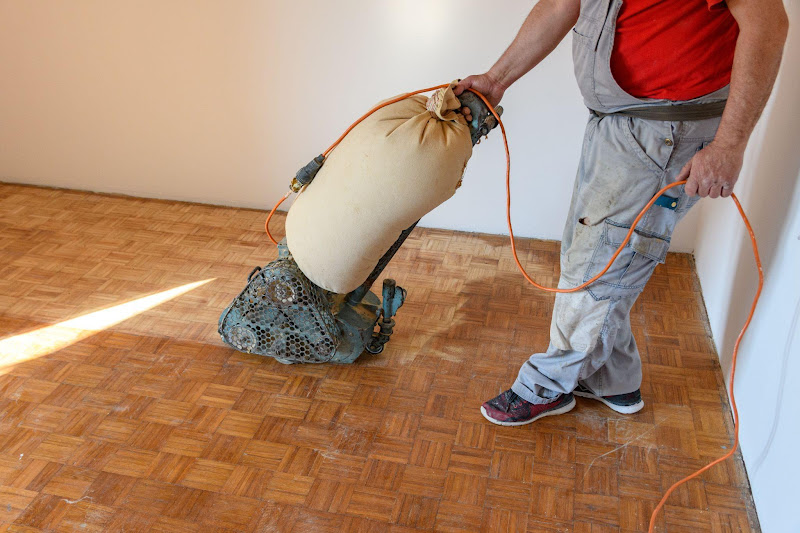
Wooden floors are still one of the most classic elements of any house, loved for their warmth, long-lastingness, and raw beauty. Like any surface, though, they need care and the odd refresh to keep them looking their best. Floor sanding is perhaps one of the best methods of revitalising and prolonging wooden floors. While homeowners pay attention to technique or finish, an essential element that tends to be forgotten is timing. The time of year when floor sanding is done can affect the quality of the finish quite a bit. Knowing how weather patterns affect wood and finishes ensures that the investment yields optimal results and this is why you should choose a professional company such as Alpha Floor Sanding Specialists, especially if you live in or around Fulham.
The Association Between Wood and Climate
Wood is a natural product that responds to its surroundings. It swells as moisture increases and dries as air gets dry. These natural movements influence how a floor will react to sanding and refinishing. Sanding at the wrong season, when the wood is swollen with water or too shrunken, can result in issues like uneven finishes, gaps, or even cracking. By selecting the appropriate season, homeowners can avoid these dangers and end up with a smoother, more durable finish.
Why Spring and Autumn Are Ideal
Spring and fall usually offer the most consistent conditions for sanding the floor. At these changeover seasons, humidity and indoor temperatures are more moderate, keeping wood fairly in balance. This consistency eases sanding equipment to build an even surface and finishes to harden in a proper manner. Moreover, most houses have less need for heating or cooling at these periods, which maintains indoor conditions equalised. The balance of moderate temperatures and even humidity makes these seasons the ideal time for floor sanding jobs.
Summer Sanding Challenges
Summer might appear convenient with longer daylight, but it has its challenges too. In most climates, high humidity will swell wood. Sanding an swollen floor may leave a flawless finish temporarily, but after the air dries out, gaps and uneven edges may form as the wood shrinks. A second problem is curing finishes. Too much moisture in the air can disrupt the drying process of sealants or varnishes, resulting in extended curing times and even milky or tacky finishes. If sanding in the summer is unavoidable, proper ventilation and indoor humidity control with dehumidifiers will help counteract these difficulties.
Challenges of Sanding in the Winter
Winter presents its own challenges. Outside there is cold air, and central heating inside produces extremely dry air, causing wood to shrink. Sanding at this period may appear to give great results, but with the return of humidity in summer months, the wood will swell and can cause buckling or finish cracking. Even finishing applied in winter seasons might not cure effectively if indoor heating creates excessive dryness or if windows cannot be opened for ventilation because of cold temperatures. For these reasons, winter sanding would normally demand additional care and rigorous control of indoor conditions.
How Timing Impacts Floor Finishes
The season not only influences the wood—but also the performance of finishes applied following sanding. Oil-based and water-based finishes both react differently to the environment. For instance, water-based finishes cure fast in low humidity but can cure too rapidly in hot, dry weather, and end up with streaks or splotchy coatings. Oil-based finishes will not cure well in cold and damp weather. Sanding at the time of the year when the weather favors curing will result in a more resilient, more appealing finish that can take daily wear.
Long-Term Durability and Comfort
Selecting the ideal season in which to sand is not merely a matter of looks—it has a direct bearing on the long-term durability of your floors. Sanding during an inappropriate season can produce short-term attractiveness but long-term issues like warping, cracking, or premature wear of the finish. By coordinating sanding with the season most conducive to the natural tendencies of wood, homeowners maintain their floors in stable, attractive condition year after year. Also, getting sanding completed during a season with average conditions reduces interference to regular life, as finishes dry up more quickly and the house is back to normal sooner.
Professional Direction's Role
General guidelines regarding seasonal sanding are valuable, but each home and environment varies. Regional weather trends, the material of the hardwood flooring, and even how old the home is can make a difference in the ideal time. Professional floor sanding businesses possess the know-how to evaluate these conditions and provide the best schedule. They can even employ equipment with specialised capabilities to manage dust, humidity, and temperature, which means that top-notch results can be attained even during times outside the suggested seasons if necessary.
Planning Ahead for the Best Results
Homeowners tend to wait until floors appear extremely worn before booking sanding. However, it's better to be proactive and coordinate the project with the appropriate season. Booking in spring or autumn not only guarantees ideal environmental conditions but also guarantees availability since experts usually get booked fast during these prime periods. Preplanning saves the hassle and eliminates the risk of hurried or substandard work.
Floor sanding is not simply a technical exercise—it is an artful dance between craftsmanship and timing. As wood tends to swell with increases in humidity and temperature, the time of year when sanding is done can make a huge difference in the finished product. Spring and autumn are the most consistent seasons for producing smooth, wear-resistant finishes, while summer and winter necessitate more caution. By knowing these seasonal factors and consulting with professionals, homeowners can keep their floors both gorgeous and durable for years to come. Timing, as much as the right method, is necessary for the best results in floor sanding.